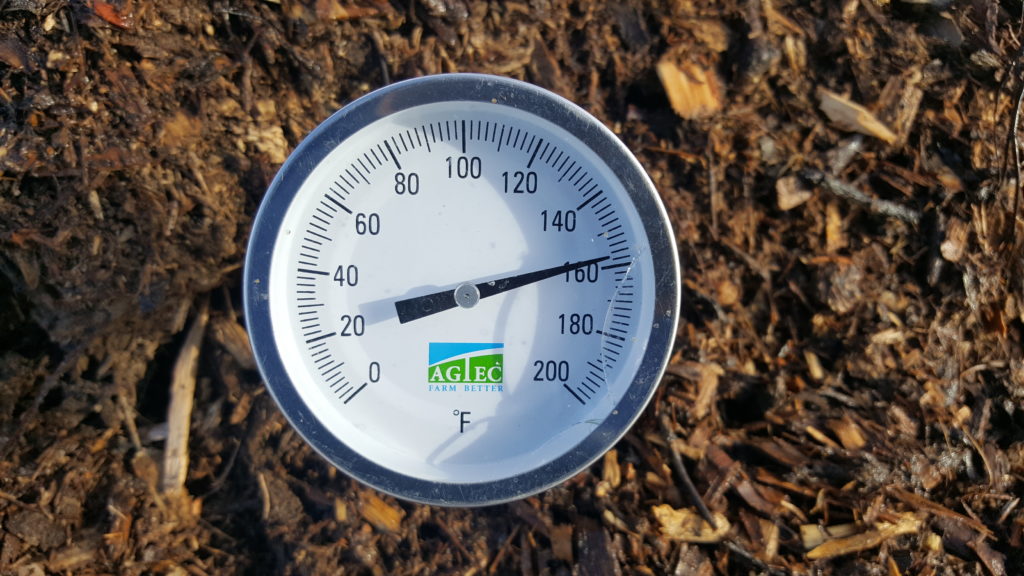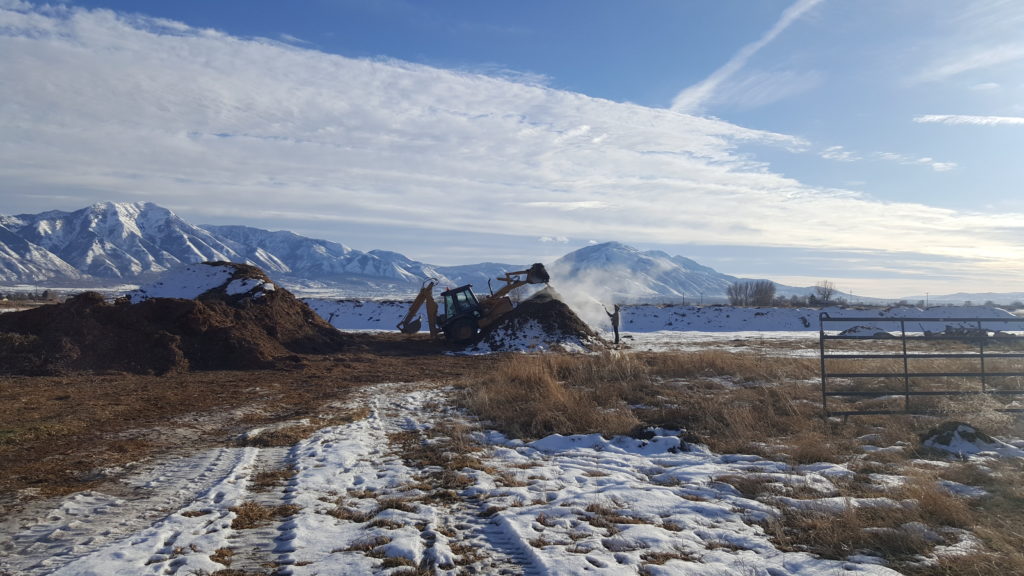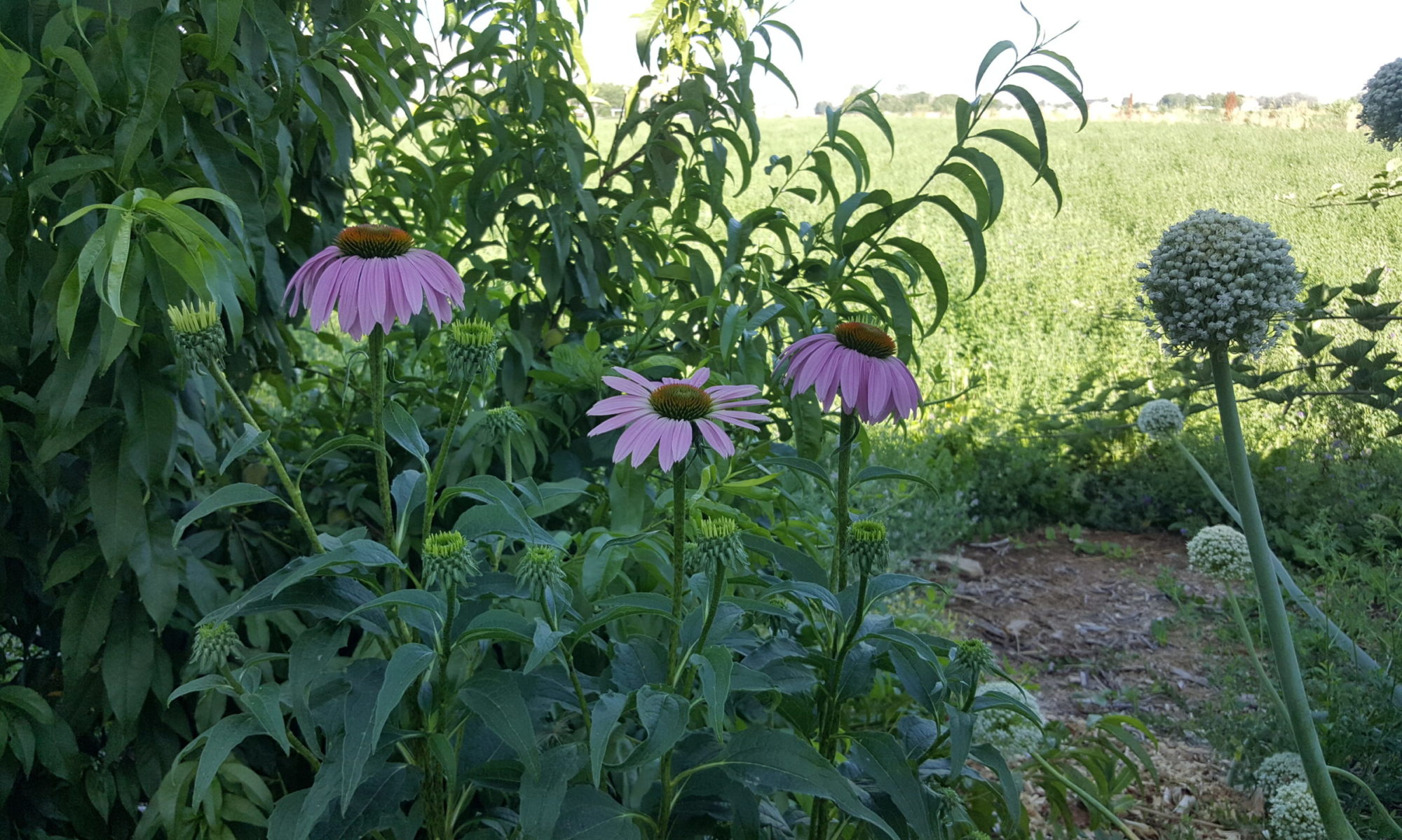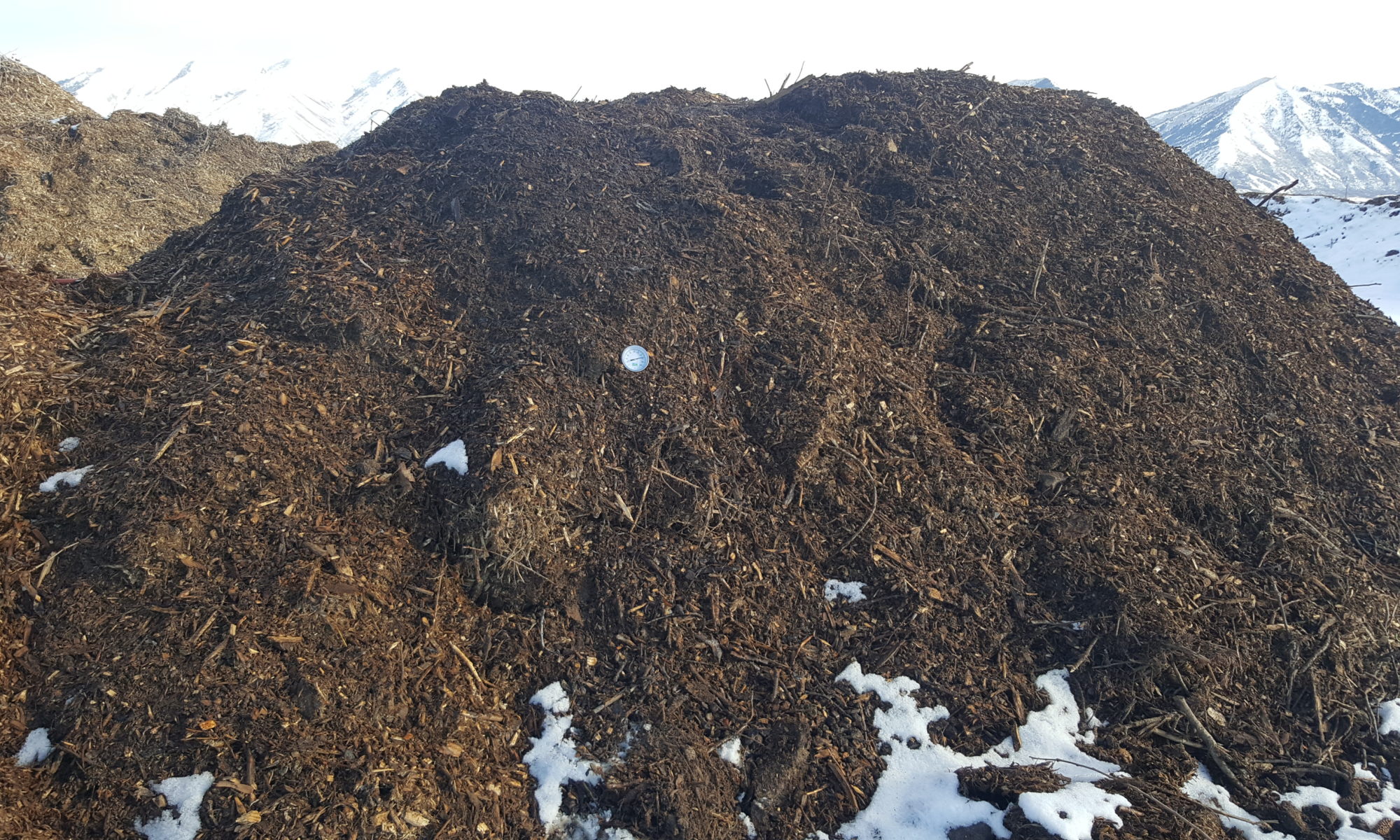Compost is nature’s age-old recipe for growing more, with higher nutrition density, better resilience, and less effort. The old-growth forests and mature grass-lands of the world developed and thrived without any humans running about spreading fertilizers, soil acidifiers or alkaline, herbicides, pesticides or fungicides. These naturally developed environments produced their own compost. Understanding and utilizing the underlying principles, most vegetable, flower, and herb gardens can be made to thrive on good compost.
Good Compost

There are many types of compost, each of which have different qualities and uses. Understanding these differences can determine how compost performs in any specific circumstance. For most garden applications, good compost should have good humus development, a neutral to slightly acidic pH, and no weed seeds, herbicides, pesticides, fungicides, hormones, antibiotics, de-wormers or other chemical residues.
What a compost is made from and how it is produced makes a big difference in how it will perform in your garden. For example, many composts are produced with animal manures. While in natural environments animal manures play an important role, most conventionally managed animal manures include hormones, antibiotics, and de-wormers. In addition, many animal feeds include persistent herbicides that come through in the manure. These chemical compounds can be broken down in the decomposition process of the compost, but many of them are long-lived, taking 2-5+ years to break down completely. Many of these composts are only given several months to a year to decompose, which doesn’t provide enough time for the compounds to be broken down. As a result, when applied to a garden, they can have undesired effects, including slowing or prohibiting germination, growth, maturation, plant nutrition and fruit production. Certain varieties of plants can grow fine with these chemicals present. However, those that do can transfer those compounds, sometimes in concentrated forms, into the fruits and vegetables – the food you eat.
To be fair, man-made chemical compounds are used so frequently and broadly around the world today that it is difficult, if not impossible, to find any spot on the globe without a trace of them. However, careful selection of composting materials and careful management of the composting process can produce compost with very little to none of them still present. Selecting organic materials with little chemical residue in the first place is the very important. Most of the longer lived chemicals break down with heat and moisture, so using a hot-composting methodology, that employs naturally high temperatures and ample moisture, can significantly accelerate the decomposition of any remaining undesirable chemicals.
Weed seeds are another unwanted hitch-hiker in most composts. They are a natural component in many of the materials that are used to make the compost. Composts that have been cold-composted, meaning they maintained a temperature below 140° Fahrenheit, preserve most of the source materials’ weed seeds ready to sprout in your garden. In order to avoid the weed seeds, some people build expensive raised beds and fill them with sterilized, man made soils. There is a more natural way to get the benefits of compost without the weed seeds. Compost that is hot-composted, meaning that it maintained a temperature of 140° Fahrenheit for 50 hours or more, will have very few, if any, viable seeds left in it.
Compost can be managed to naturally heat itself through aerobic decomposition. With the right knowledge and care the decomposition process can be channeled to successfully decompose its own weed seeds, while promoting the development of a wide variety of beneficial aerobic microbiological life.
Decomposition works either aerobically our anaerobically, resulting in differences in the compost that affect how it performs in the garden. A larger variety of microorganisms beneficial to food plants thrive in aerobic environments. Conversely, a larger variety of dangerous and parasitic microorganisms reproduce more readily in anaerobic environments. Compost that is produced through aerobic hot-composing, can produce compost with more beneficial microorganisms for the garden that will symbiotically feed and protect plants than composts produced with anaerobic methods.
At Pemberley Farm we take our compost seriously. We make our compost from wood chips and tree root grindings. These have little in the way of chemicals or weed seeds. We aerobically hot-compost them, carefully measuring and managing our compost piles to ensure every part of the pile reaches target temperatures and maintains them for 50 hours or more. We turn our piles regularly to ensure they are well oxygenated to accelerate the aerobic decomposition and heat generation. Our resulting compost works very well for growing a beautiful garden without weeds or unwanted chemicals.

Applying Compost for Best Results
It is best to apply compost at least 4-8 weeks before your first planting date if possible. Compost can actually be applied while plants are growing. However, putting it on before can have the best results. For the central, high-altitude mountain-west in the United States, if you intend to sow peas, spinach and other spring vegetables in March, then for best results you’ll want to apply compost sometime between November and the end of January. If you plan to plant only summer vegetables in May, then it is best to apply compost in April. The reason for applying compost so long in advance is to permit the bacterial and fungal networks to establish and integrate with your local soil before you plant.
How much compost to apply depends on the state of the intended area for planting. If it is an established garden bed, in most cases, you will receive the best results by simply applying 2-3 inches on the surface once each year. If it is a new area for planting, best results will be achieved by placing 1-2 layers of corrugated cardboard (called a sheet mulch) on the surface, and 8-12 inches of compost on top of the sheet mulch. If you have an established garden bed, but have experienced significant weed pressure, the weeds can be significantly suppressed with a sheet mulch and 6-8 inches of compost, similar to starting a new bed.
In most cases, I recommend against tilling as tests and experience have shown that doing so generally decreases production while greatly increasing weed pressure. Add to the injury of less production and more weeds the insult of having expended greater effort to till, and it simply isn’t worth it.
For gardeners that have always tilled, most are scared not to till the first time. If this is your case, you might trying half the garden or bed tilled and half not tilled and compare results. Whether you till or not, best results with compost are achieved by laying the compost on the surface like a blanket, without turning it into the soil layer.
Compost is light weight and can dry out and blow in the wind. If you have high winds or are applying the compost in an unprotected area, you will want to cover the compost with mulch that is not prone to blowing, such as wood chips, to keep it in place.


